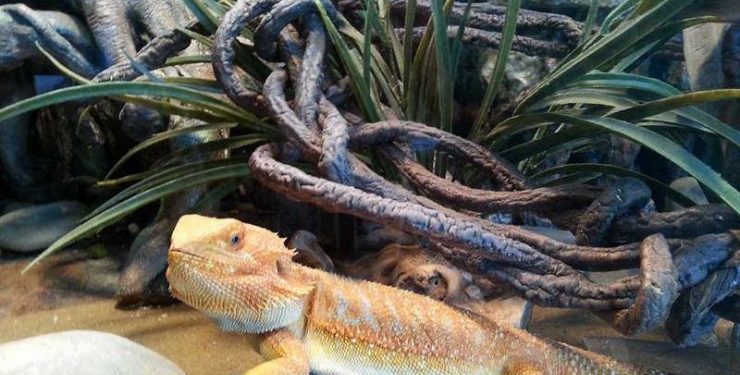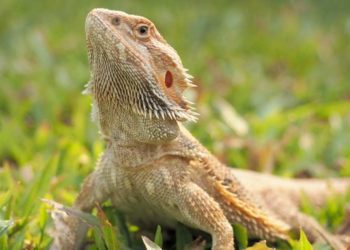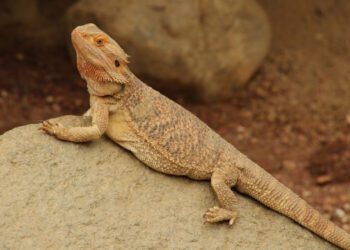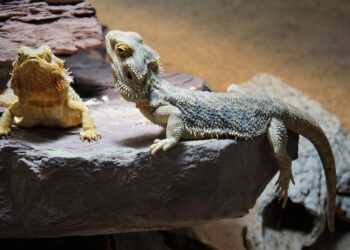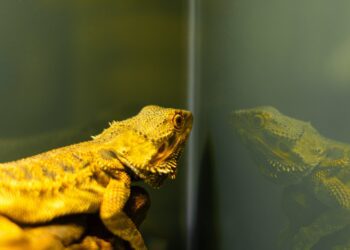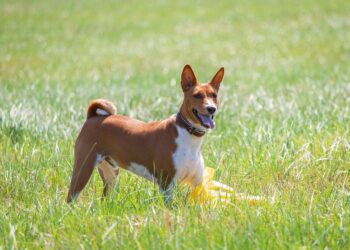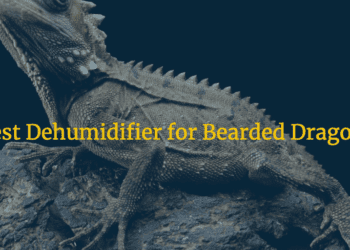In cases when the concentration increases in bearded dragons we see that the bearded dragons lose the capability to repair the damage. It can even become a disease and be life-threatening as well. Stress can be the main cause of this coccidia becoming a disease. In the young bearded dragons, coccidia can be a major cause of death as well.
This daunting aspect in the bearded dragons. This can be commonly found in bearded dragons even without any symptom or disease. The immune system might get swings keeping in control of the infection.
- Cause: Isosporaamphilboluri
- Symptoms: Smelly stools and blood in mucus, dehydration, and pale gums.
- Risk factors: Contaminated nutrition, poor husbandry, stress.
- Treatment: Drugs and hood husbandry practices
This is seen that the risk of this infection in pet bearded dragons is quite high. Mc Allister tested around 50 bearded dragons in California and around 32% of these were affected by the coccidia.
This disease is seen to be there in every 1 out of 3 bearded dragons. And we also see that more than one species of coccidia can be there at one point in time.
This is significantly responsible for the mortality in juvenile dragons. Diarrhea caused by the coccidia can even lead to serious illness in young ones.

The common cause of the coccidia is Isospora and Eimeria. There are common parasites of Coccidia which are called cryptosporidium. It is usually referred to as crypto rather than anything else due to its nature.
The most common species of these parasites are there in the bearded dragons and once this parasite infects the body then it might lead to serious illness if not diagnosed properly and timely.
This infection reaches the intestines and destroys the epithelial cells. Often this disease is not alone and it might come with other infections too. These infections can further lead to serious conditions.
Contents
How do bearded dragons get infected with the coccidia?
These infections enter the bearded dragon through the fecal route or the oral route. This means that there is some sort of contamination that enters the mouth.
An infected bearded dragon sheds eggs that are Coccidia eggs and these are referred to as the oocysts. When the contaminated stool passes it infects everything that it touches like the surfaces, tail, feet, and whatever else. This leads to coccidia in the bearded dragons.
The bearded dragons are vulnerable to the coccidia when they are young and it can even occur at any age.
Some factors include:
- Overcrowding
- Stress
- Small areas
- Poor sanitization
- Improper diet
Also, these factors are those that the bearded dragon’s owners have control over and they can check out ways to prevent this.
If the users practice good husbandry then this disease might not be seen.
We see that coccidiosis also infects a lot of vertebrates like reptiles as well. The parasite that infects the bearded dragons is host-specific. So the humans have no risk of getting this infection from the bearded dragons.
The life cycle of the coccidia
These are the protozoa and are the most common endoparasite that is detected in bearded dragons. This parasite is prevalent in 1 out of every 3 bearded dragons. This parasite commonly requires only one host and it can complete the whole life cycle therein.
The life cycle starts with an egg and the bearded dragon sheds the locusts in the feces. Moreover, when the oocysts sporulate they become infective.
Symptoms:
This disease can vary in the bearded dragons and it might range in severity. The severity ranges and when it is less than the symptoms are not too obvious but when the severity is high then the stool stinks.
When the infection rate is low, you might notice stunned growth and it takes quite a time to be apparent.
Common symptoms are:
- Diarrhea: This is a common form of coccidiosis and the smell is foul. There might be blood too.
- Weakness and apathy are also the symptoms of coccidia.
- You might notice your bearded dragon losing weight and not wanting to eat anything.
- Poor growth. If you find that your bearded dragon is small and needs to grow then it is important that you take it to the vet.
- Dehydration and depression
This disease leads to the destruction of the intestinal epithelial cells and even the connective tissues that underline the gut wall. When it gets destroyed you will notice the clinical signs as well as the symptoms. The symptoms of the coccidiosis become apparent with the degree of parasite and the level of symptoms that your pet shows.
You might notice pain and discomfort when the infection grows. This infection will make it difficult for the nutrients to be used up by the body.
You can take your pet to the vet if you notice any of these symptoms as these can highly affect the health of your bearded dragon. Moreover, we see that the vet will perform certain tests of the mucus to judge what the problem is, you can thereafter carry out the required care plan.
Conclusion:
We see that this infection is due to parasites and infections that the pet consumes. Moreover, the infection can be very dangerous in the case of the young ones and can even lead to death. So make sure you provide the required diet and husbandry.
More:


